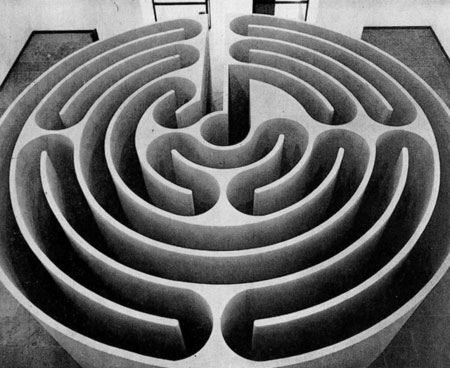The first project, Orbicular Geode Puzzle, I found was made by Nervous System. It’s a puzzle that is computer generated to represent a slice of an algorithmic geode. Each puzzle is unique, emerging from a computer simulation that creates natural variations in the shape, pieces, and image. The way the puzzle is cut, a dense, maze-like pattern with extreme intertwining and high piece count, makes it an extremely hard puzzle to solve.

It is similar to my final project because I’m making a generated maze. Though I probably won’t be able to make something as complex as this, it is a nice project to see how beautiful a generated puzzle can be.

My second project, while not a highly technical project, explores mazes even more. Robert Morris, American sculptor, conceptual artist, and writer, is regarded as one of the most prominent theorists of Minimalism. The Philadelphia Labyrinth was a site-specific art installation. While this is still a contemporary project, I think it’s interesting how much labyrinths, mazes, and puzzles have been a part of the human consciousness since ancient times.

![[OLD FALL 2018] 15-104 • Introduction to Computing for Creative Practice](wp-content/uploads/2020/08/stop-banner.png)